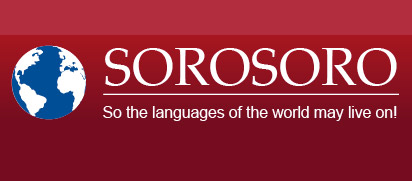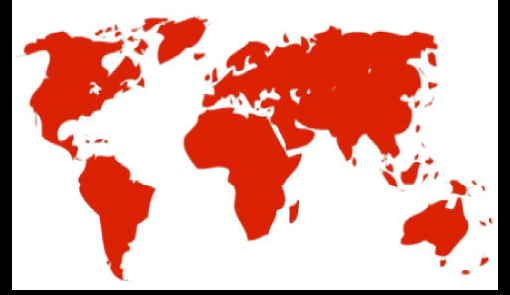Print  |
|

Modern Aramaic languages
Page by Jean Sibille, 2011.
Facts on modern Aramaic languages
Alternative names:
Where are Neo-Aramaic languages spoken:
They are spoken in the Middle-East, in Iran, Iraq, Syria and Turkey, as well as in many communities throughout the United States and Europe.
Ma’aloula is spoken in Syria in three villages of the Anti-Lebanon, at the North-East of Damas: in Ma‘aloula Gupa‘od (Jubb‘adin in Arabic) and in Bakha.
Modern Mandaic (or Ratna) is spoken in Iran, in Ahwaz and Khorramshahr in Khuzestan
Turoyo is spoken in the Tur Abdin area in Turkey, in the Khabur province in Syria (especially in the town of Qamishli).
Sureth or Neo-Aramaic of the North-East is spoken in the north of Iraq as well as Azerbaijan and Iranian Kurdistan (regions of Urmia, Salmas, Sanandaj). It is also spoken in the Hakkari mountains in Turkey and in the Khabur province in Syria, in about thirty villages founded in the 30’s by refugees from the Hakkari mountains (on the borders of Turkey, Iran and Iraq).
Who speaks Aramaic languages:
Aramaic language speakers mainly come from Christian and Jewish populations of the Middle-East. Modern Mandaic is spoken by Mandeans (Mandaeism is a minority religion similar to Gnostism, claiming John the Baptist as prophet. Ma’aoula is the only type of modern Aramaic language spoken by Muslims.
Total estimated number of speakers: a little over 600,000 speakers (according to UNESCO figures) but Sureth alone is spoken by approximately 500,000 people.
Classification: African-Asian family, Semitic languages, group of North-West Semitic languages.
Modern Aramaic languages descend from various Aramaic dialects.
Ancient forms of Aramaic recognized thanks to inscriptions and texts from Antiquity (Old Aramaic) and the Middle Ages (Middle Aramaic) don’t exist any more. However, two dialects from Middle Aramaic still have a liturgical use: Syriac and classic Mandaic.
Internal classification:
– Western Aramaic branch:
Ma’aloula: approximately 20,000 according to the UNESCO.
– Eastern Aramaic branch:
Turoyo: approximately 50,000 speakers according to the UNESCO
Sureth: approximately 50,000 speakers according to J.Sibille (2010).
Modern Mandaic: a few hundred speakers according to J.Sibille (2011, c.p.).
Turuyo and Sureth are closer to each other than they are to Mandaic, which comes from classic Mandaic. Ma’aloula is the last living representative of the Western branch. To understand the origin of different Aramaic languages better, see below chart.
Family tree of modern Aramaic languages
NB. Not all of the (numerous) branches of Aramaic, now dead, are represented in this sketch. Only Syriac and branches leading to languages still alive are represented.
Are Aramaic languages in danger ?
Yes, all Aramaic languages still alive are in danger. The most endangered language is Mandaic, which is on the verge of disappearing. Turoyo is listed as a “severely endangered” language (step 3 on a scale of 1 to 5) by the UNESCO, which considers Ma’aloula and Sureth as “endangered” (step 2) as well.
A few historical details
The first written proof of Aramaic dates back to the beginning of the first millennium before the Christian era. From the 7th century before our era, it became the administrative language of the Neo-Assyrian empire, then of the Neo-Babylonian and Persian empires, and the lingua franca of the whole Near and Middle-East. In ancient times, there were an Eastern branch (Mesopotamia) and a Western branch (Palestine, Lebanon, Western Syria). Lapidary inscriptions and texts (Aramaic extract from the Bible, Palestinian Targum, Babylonian Targum, Qumran manuscripts, Talmud…) testify to many dialects.
In the beginning of the Christian era, Syriac, which would be the Aramaic dialect of Edessa (now Ourfa or Urfa in Turkey) became the classic languages of Western Christians. Syriac literature remained active until the 13th century. Syriac then became more confined to religious usage.
No modern Aramaic language descends directly from Syriac. They originate from parallel branches of Aramaic. Languages of the Western branch (Turoyo, Sureth, Mandaic) probably stem from Babylonian Aramaic, quite close to Syriac. Moreover, Syriac – language of religion – has significantly influenced modern Aramaic languages (at least in the Christian world).
Bibliography
Awde (Nicholas), Lamassu (Nineb) & Al-Jeloo (Nicholas) Modern Aramaic (Assyrian / Syriac). Dictionary and phrasebook, Hippocrene Books INC, New York 2007, 304 p.
David (Rev. Samuel), The first English-Chaldean dictionary, Chicago, 1924, 423 p. (followed by a chaldean-english glossary de 140 p.) [reprint http://www.lulu.com/atourpub ou www.assyrianmarket.com]
Maclean (Arthur John), Dictionary of the dialects of vernacular Syriac, Oxford 1901, 334 p. [reprint : Gorgias Pres, 2003 et Atourpub]
Poizat (Bruno) Manuel de soureth. Initiation à l’araméen d’aujourd’hui parlé et écrit, Geuthner, Paris, 2008, 320 p.
Sabar (Yona), A Jewish Neo-aramaic dictionary, Harrassowitz Verlag, Wiesbaden, 2002, 338 p. [headwords in Hebraic characters + Latin character transcription + English translation, based on the Zakho Jewish dialect]
Links
You can find free online courses of aramaic languages at www.surayt.com
Please do not hesitate to contact us should you have more information on this language: contact@sorosoro.org








